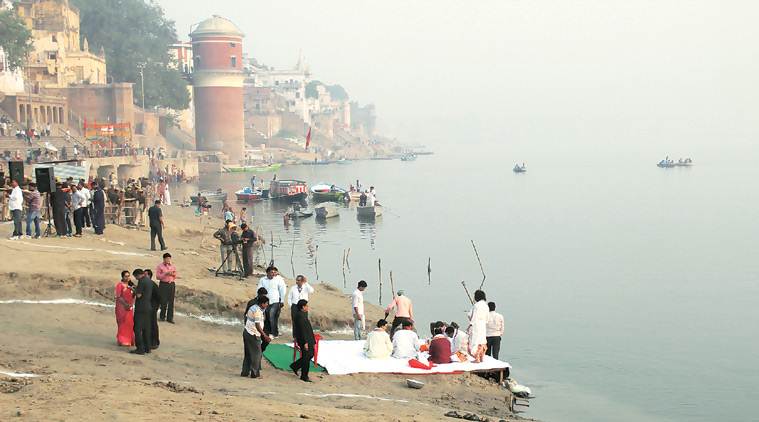 Both in-situ and through remote-sensing observations, the study says that observations suggest that pre-monsoon Ganga river water is continuously depleting in the studied reaches within the studied period. (Photo for representation)
Both in-situ and through remote-sensing observations, the study says that observations suggest that pre-monsoon Ganga river water is continuously depleting in the studied reaches within the studied period. (Photo for representation)
UNDER INCREASING stress over its water quality, the Ganga has over recent years also witnessed “an unprecedented low water level and flow in the middle and lower reaches” of the river, a study has found.
The river depletion is linked to groundwater storage depletion in adjoining Gangetic aquifers, according to the study in Nature’s Scientific Reports.
It pointed out that such levels of depletion in river water volume will have a profound effect on future food security in the Ganga basin which would “experience substantial reduction in food production, if groundwater is continued to be extracted in current unsustainable rate.”
“In summer (pre-monsoon) of recent years, low water level among the last few decades, has been observed in several lower Indian reaches of the Ganges (with estimated river water level depletion rates at the range of -0.5 to -38.1 cm/year between summers of 1999 and 2013 in the studied reaches),” it stated.
In other words, both in-situ and through remote-sensing observations, the study says that observations suggest that pre-monsoon Ganga river water is continuously depleting in the studied reaches within the studied period.
The study, titled ‘Groundwater depletion causing reduction of baseflow triggering Ganges river summer drying’, noted summer drying in the summer months of 2015-17. It reports, “…the observed summer drying in recent years, in the studied reaches of the river, pose a much bigger crisis, possibly suggesting an impending surface water crisis in the region, in conjunction with the already well documented, ongoing ‘groundwater drought’ in the Indian subcontinent.”
The study notes that there is unavailability of discharge data in public domain given the nature of the Ganga, a trans-boundary river. “Notwithstanding this data unavailability…for the first time, we demonstrate the river water depletion trend…from in situ, daily-scale, long-term river water level measurements. We also observed depleting pre-monsoon water levels in Ganges through remote sensing observation obtained from 28 locations on Ganges river,” it noted.
The study found that the river showed decreasing estimates in 19 of 28 locations.
It noted that with increased precipitation and limited contribution from glacier melt, “any major, long-term decrease in Ganges river water may be largely linked to groundwater-river water interactions, besides any anthropogenic alteration,” such as river engineering, canal diversion, surface water abstraction yet the study did not incorporate these factor owing to lack of data.
The study was co-authored by Abhijit Mukherjee from IIT-Kharagpur, Soumendra Nath Bhanja from the University of Edmonton, Canada, and Yoshihide Wada from Utrecht University, the Netherlands.